Submitted:
03 January 2024
Posted:
05 January 2024
You are already at the latest version
Abstract
Keywords:
1. Introduction
2. Numerical Model
2.1. Governing Equations
2.2. Computational Domain and Oscillation Equations
2.3. Newmark-β Method
2.4. Grid Independence Verification
3. Numerical Model Validation
4. Results and Discussions
4.1. VIV responses
4.2. Phase Angle and Mean Drag Coefficients
4.3. Wake Flow
5. Conclusions
Data Availability Statement
Acknowledgments
References
- Rashidi S., Hayatdavoodi M., and Esfahani J.A., “Vortex shedding suppression and wake control: A review”, Ocean Eng. 126, 57-80 (2016). [CrossRef]
- Wang W., and Zhao F.W., “Numerical investigation on flow-induced vibration response of the cylinder inspired by the honeycomb”, Ocean Eng. 268, 113461 (2023).
- Irawan Y.H., Raza S.A., and Chern M.J., “Passively enhanced VIV responses of side-by-side cylinders at moderate Reynolds number”, Appl Ocean Res. 138, 103668 (2023). [CrossRef]
- Liu H., Han X., Williams J.J.R., Xie R.Y., and Lin P.Z., “3D numerical study of splitter Plate’s effect on a flexible cylinder VIV”, Appl Ocean Res. 269, 113397 (2023).
- Tang T., Zhu H.J., Song J.Z., Ma B.W., and Zhou T.M., “The state-of-the-art review on the wake alteration of a rotating cylinder and the associated interaction with flow-induced vibration”, Ocean Eng. 254, 111340 (2022).
- Liu G.J., Li H.Y., Qiu Z.Z., Leng D.X., Li Z.X., and Li W.H., “A mini review of recent progress on vortex-induced vibrations of marine risers”, Ocean Eng. 195, 106704 (2020).
- Chen W.L., Huang Y.W., Chen C.L., Yu H.Y., and Gao D.L., “Review of active control of circular cylinder flow”, Ocean Eng. 258, 111840 (2022).
- Hong K.S., and Shah U.H., “Vortex-induced vibrations and control of marine risers: A review”, Ocean Eng. 152, 300-315 (2018).
- Zhao M., “A review of recent studies on the control of vortex-induced vibration of circular cylinders”, Ocean Eng. 285, 115389 (2023). [CrossRef]
- Rabiee A.H., Barzan M.R., and Mohammadebrahim A., “Flow-induced vibration suppression of elastic square cylinder using windward-suction-leeward-blowing approach”, Appl Ocean Res. 109, 102552 (2021). [CrossRef]
- Ding L., Kong H., Zou Q.F., Wang J.L., and Zhang L., “2-DOF vortex-induced vibration of rotating circular cylinder in shear flow”, Ocean Eng. 249, 111003 (2022).
- Vicente-Ludlam D., Barrero-Gil A., and Velazquez A., “Flow-Induced Vibration of a rotating circular cylinder using position and velocity feedback”, J. Fluids Struct. 72, 127-151 (2017). [CrossRef]
- Zhu H.J., and Gao Y., “Vortex-induced vibration suppression of a main circular cylinder with two rotating control rods in its near wake: Effect of the rotation direction”, J. Fluids Struct. 74, 469-491 (2017).
- Wan H., and Patnaik S.S., “Suppression of vortex-induced vibration of a circular cylinder using thermal effects”, Phys. Fluids 28, 123603 (2017).
- Garg H., Soti A.K., and Bhardwaj R., “Vortex-induced vibration of a cooled circular cylinder”, Phys. Fluids 31, 083608 (2019).
- Hebrero F.C., D’Adamo J., Sosa R., and Artana G., “Vortex induced vibrations suppression for a cylinder with plasma actuators”, J. Sound Vib. 468, 115121 (2020). [CrossRef]
- Zheng C.D., Ji T.W., Xie F.F., Zhang X.S., Zheng H.Y., and Zheng Y., “From active learning to deep reinforcement learning: Intelligent active flow control in suppressing vortex-induced vibration”, Phys. Fluids 33, 063607 (2021).
- Chen W.J., Wang Q.L., Yan L., Hu G., and Noack B.R., “Deep reinforcement learning-based active flow control of vortex-induced vibration of a square cylinder”, Phys. Fluids 35, 053610 (2023).
- Cui G.P., and Feng L.H., “Combined effect of bending stiffness and streamwise length of the attached flexible splitter plate on the vortex-induced vibration of a circular cylinder”, Exp. Therm. Fluid Sci. 141, 110787 (2023).
- Song Z.H., Yang X., Li T., Shen Y.J., Duan M.L., “Numerical investigation on VIV of a circular cylinder with multiple small control rods”, Appl Ocean Res. 139, 103690 (2023).
- Ishihara T., and Li T., “Numerical study on suppression of vortex-induced vibration of circular cylinder by helical wires”, J. Wind Eng. Ind. Aerod. 197, 104081 (2020).
- Yuan W.Y., Laima S.J., Gao D.L., Chen W.L., and Li H., “Influence of porous media coatings on flow characteristics and vortex-induced vibration of circular cylinders”, J. Fluids Struct. 106, 103365 (2021).
- Gao Y., Zong Z., Zou L., Takagi S., and Jiang Z.Y., “Effect of surface roughness on vortex-induced vibration response of a circular cylinder”, Mar. Struct. 57, 165-179 (2018).
- Gao Y., Yang J.D., Xiong Y.M., Wang M.H., and Peng G., “Experimental investigation of the effects of the coverage of helical strakes on the vortex-induced vibration response of a flexible riser”, Appl Ocean Res. 59, 53-64 (2016).
- Zheng H.X., and Wang J.S., “Flow-induced vibration of flexible cylinders covered by fixed fairings with different chord-thickness ratios”, Mar. Struct. 86, 103299 (2022).
- Li Z.F., Song G.M., and Chen Y.L., “Experimental study on bird-wing-shaped suppression device for vortex-induced vibration of deep water risers”, Ocean Eng. 213, 107669 (2020).
- Wang W., Song B.W., Mao Z.Y., Tian W.L., and Zhang T.Y., “Numerical investigation on VIV suppression of the cylinder with the bionic surface inspired by giant cactus,” Ocean Eng. 214, 107775 (2020).
- Wang W., Mao Z.Y., Song B.W., and Han P., “Numerical investigation on vortex-induced vibration suppression of the cactus-inspired cylinder with some ribs,” Phys. Fluids 33, 037127 (2021).
- Nikoo H.M., Bi K.M., and Hao H., “Effectiveness of using pipe-in-pipe (PIP) concept to reduce vortex-induced vibrations (VIV): Three-dimensional two-way FSI analysis” Ocean Eng. 148, 263-276 (2018).
- Jauvtis N., and Williamson C.H.K., “The effect of two degrees of freedom on vortex-induced vibration at low mass and damping,” J. Fluid Mech. 509, 23-62 (2004).
- Kang Z., Zhang C., Chang R., and Ma G., “A numerical investigation of the effects of Reynolds number on vortex-induced vibration of the cylinders with different mass ratios and frequency ratios,” Int. J. Nav. Arch. Ocean 11, 835-850 (2019).
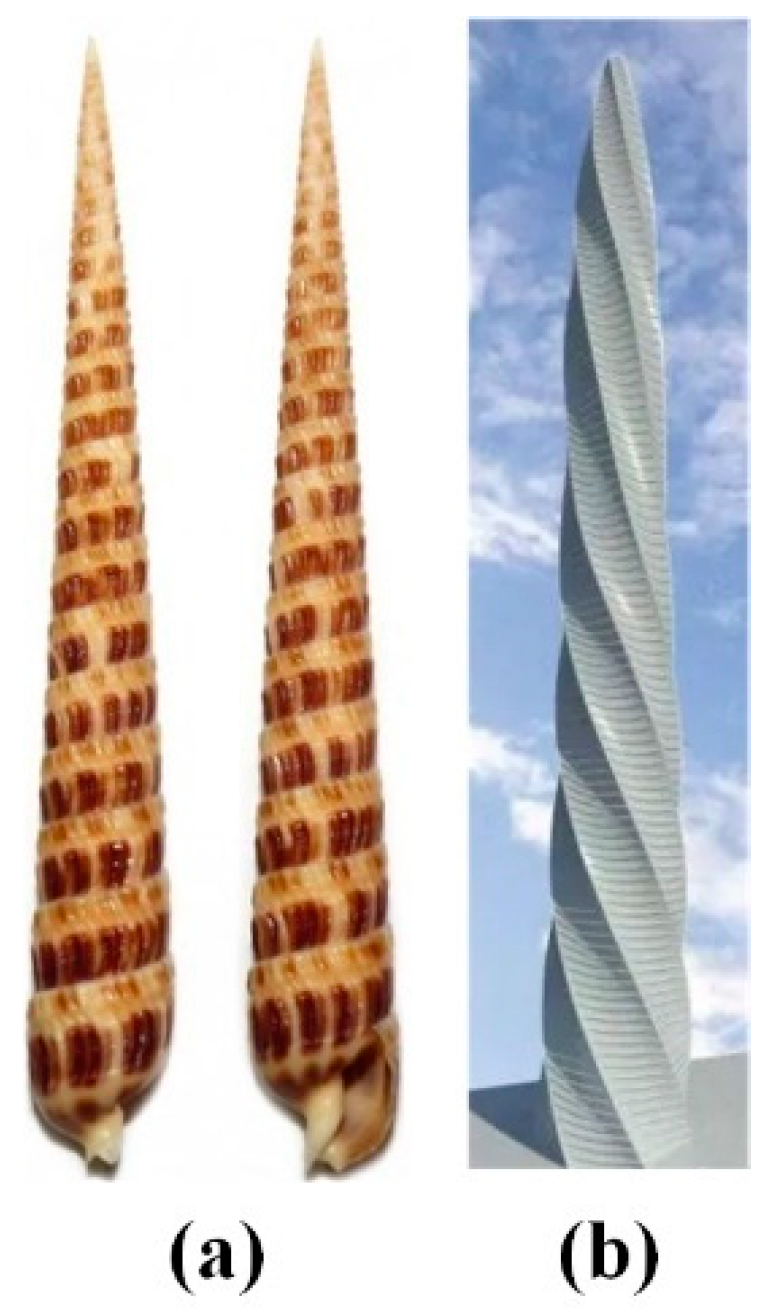








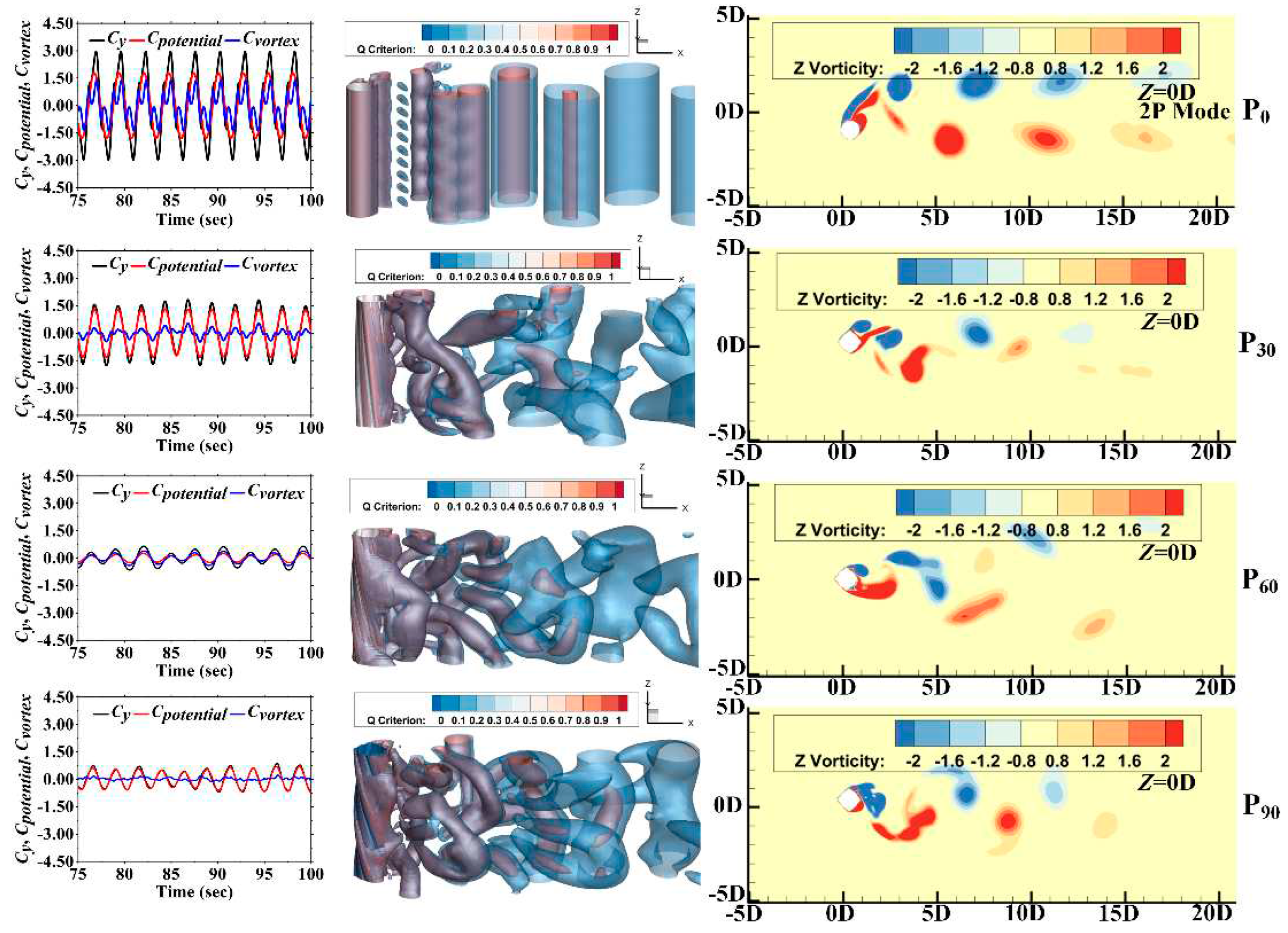
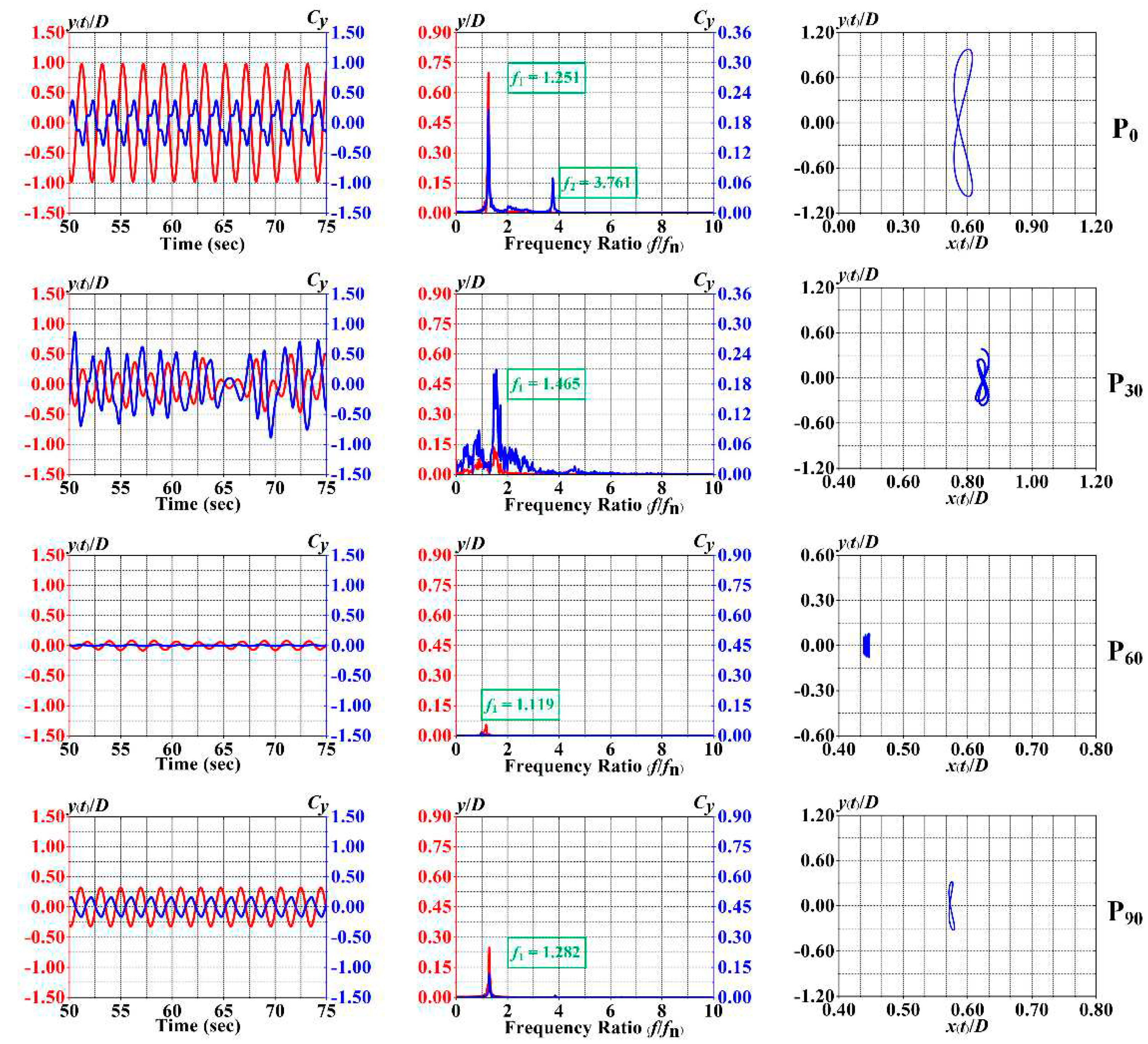

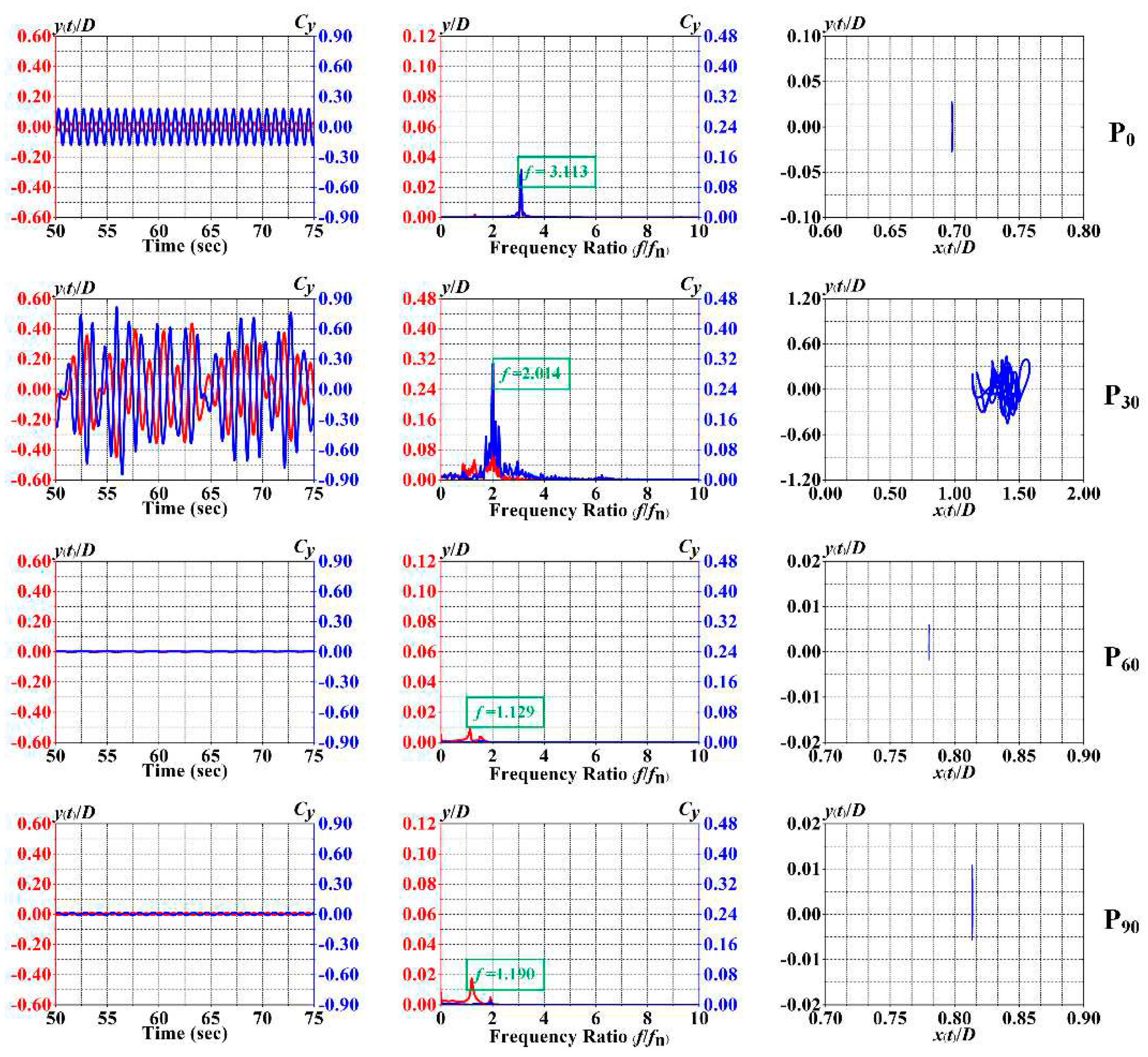



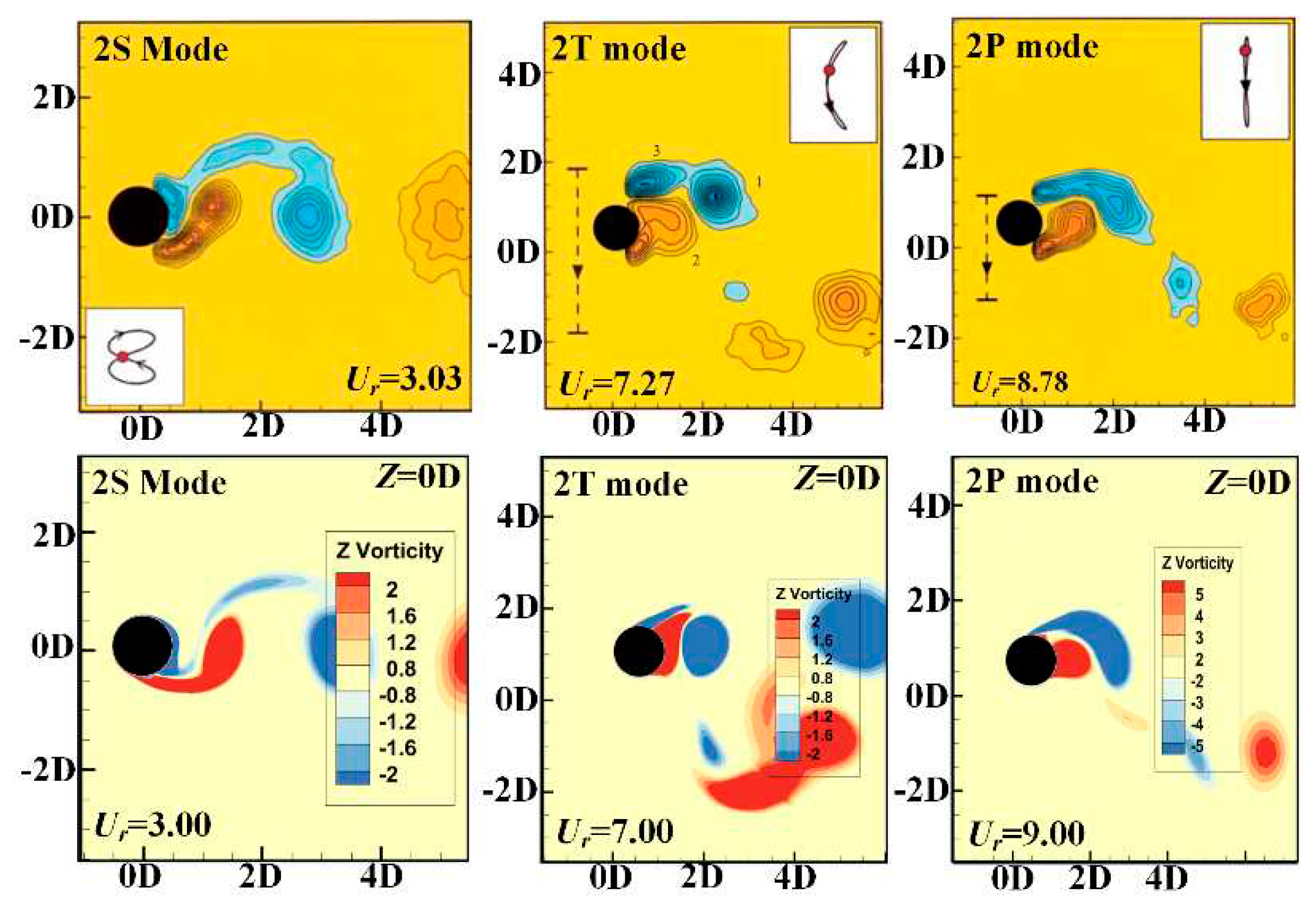

| Description | Symbol | Value |
| Mass-ratio | m* | 2.6 |
| Length of the cylinder | L (m) | 0.5 |
| Damping-ratio | ξ | 0 |
| Diameter of the cylinder | D (m) | 0.1 |
| Natural frequency in water | fn (Hz) | 0.4 |
| Mesh | Elements | Ay/D | fs/fn |
| Mesh-1 | 0.45×106 | 0.2489 | 0.9989 |
| Mesh-2 | 0.90×106 | 0.2207 (11.33%) | 0.9091 (8.99%) |
| Mesh-3 | 1.80×106 | 0.2116 (4.11%) | 0.8798 (3.22%) |
| Mesh-4 | 3.60×106 | 0.2009 (0.97%) | 0.8723 (0.85%) |
| Mesh-5 | 7.20×106 | 0.2003 (0.28%) | 0.8698 (0.29%) |
| Model | m* | D | fn | ξ | Re |
| Jauvtis et al.30 | 2.6 | 0.0381 | 0.4 | 0.005 | 1450~10200 |
| Kang et al.31 | 2.6 | 0.1143 | 0.4 | 0.005 | 13050~91800 |
| Gao et al.23 | 2.6 | 0.0381 | 0.24~1.72 | 0 | 5000 |
| Present | 2.6 | 0.1000 | 0.4 | 0 | 8000~56000 |
Disclaimer/Publisher’s Note: The statements, opinions and data contained in all publications are solely those of the individual author(s) and contributor(s) and not of MDPI and/or the editor(s). MDPI and/or the editor(s) disclaim responsibility for any injury to people or property resulting from any ideas, methods, instructions or products referred to in the content. |
© 2024 by the authors. Licensee MDPI, Basel, Switzerland. This article is an open access article distributed under the terms and conditions of the Creative Commons Attribution (CC BY) license (http://creativecommons.org/licenses/by/4.0/).





